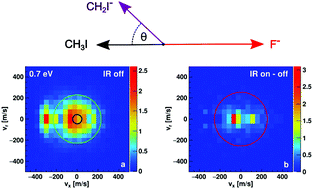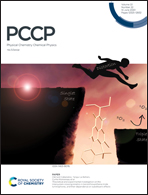Proton transfer dynamics modified by CH-stretching excitation
Abstract
Gaining insight how specific rovibrational states influence reaction kinetics and dynamics is a fundamental goal of physical chemistry. Purely statistical approaches often fail to predict the influence of a specific state on the reaction outcome, evident in a great number of both experimental and theoretical studies. Most detailed insight in atomistic reaction mechanisms is achieved using accurate collision experiments and high level dynamics calculations. For ion–molecule reactions such experiments are scarce. Here we show the influence of symmetric CH-stretching vibration on the rate and dynamics of proton transfer in the reaction of F− + CH3I. We find a pronounced shift in the reaction dynamics for excited reactions from indirect to preferred direct dynamics at higher collision energy. Moreover, excited reactions occur at larger impact parameters. Finally, we compare vibrational excitation with collision energy and find that vibration is overall more efficient in promoting reactivity, which agrees with recent theoretical calculations.

- This article is part of the themed collection: 2020 PCCP HOT Articles


 Please wait while we load your content...
Please wait while we load your content...